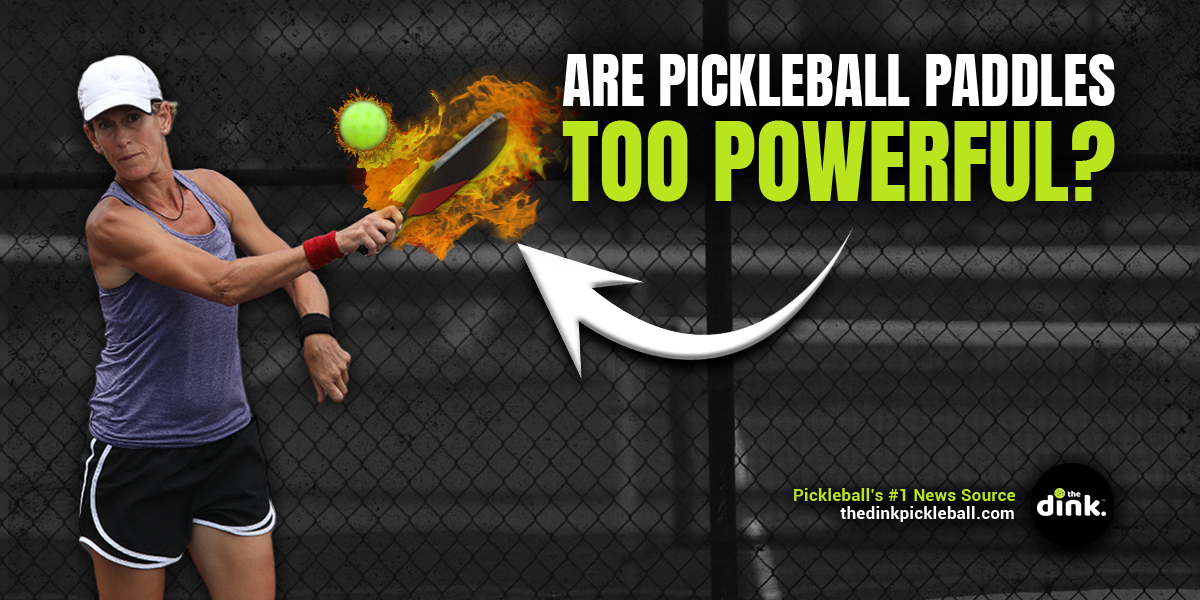
Step onto any pickleball court today, and it will look and sound much different than it did just a few years ago. Soft dinks have been virtually eliminated by powerful drives, and the gentle thuds produced by pickleball paddles have been replaced with roaring explosions.
Plainly put, pickleball paddles are more powerful than ever.
While this is terrific for the bottom lines of paddle manufacturers, it’s left many pickleball players (and even the pros) wondering if all this power is good for the game.
Recently, The Dink sat down with Chris Olson from Pickleball Studio to discuss the state of the pickleball paddle industry.
In the Q&A we talked about:
- What manufacturers are saying about the increasing power of their paddles
- The concerns he has for what this power means for the game
- Should players be worried about their own safety
- Ultimately, who is responsible if someone loses an eye
First, let’s introduce Chris.
Who is Chris Olson?
Chris Olson is considered by many to be the top pickleball paddle reviewer out there. If that sounds a bit bombastic, it is. But it’s also true. He’s somebody that pickleball players (this author included) listen to when they want to know whether a pickleball paddle lives up to its marketing hype.
His reviews can single-handedly turn a little-known paddle company struggling to make sales into the hottest paddle on the market.
Assuming, of course, that it’s good. Because if it isn’t, he’ll also tell us that.
We trust Chris to tell it like it is because he isn’t affiliated with any particular paddle brand.
His YouTube Channel offers dozens of pickleball paddle reviews, including a recent one – Vatic Pro Oni Review | Is “Gen 3” a Train Wreck Waiting to Happen? – that has garnered a lot of attention and revealed to the pickleball world that some serious issues might be happening in the pickleball paddle industry.
What’s going on?
We recently explored "Is Pickleball Paddle Manufacturing Facing a Potential Crisis?"
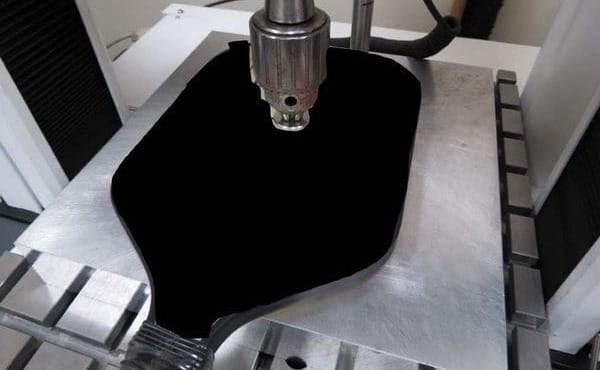
For those who didn’t read it, you just need to know this:
- Some of the new pickleball paddles are more powerful than ever.
- Occasionally, these paddles "break," making them even more powerful
- Everyone is wondering, how much more powerful should pickleball paddles get?
Below is the Q&A we had with Chris to get his unique perspective on what’s happening with pickleball paddles and his thoughts about where the industry is heading.
Was there a follow-up by Vatic after you posted your video?
Chris: Not much. The only real follow-up that's happened is on my Discord server. Daryl (the Vatic Pro owner) posted an image where he said his factory durability tested 30 of their paddles.
If it’s the machine I am thinking of, it holds the paddle in place and whacks it 5,000 times to simulate hitting the paddle at higher forces and see if it breaks down. Vatic says that they tested 30 paddles with this and all 30 of them passed.
My only thought after this was, is 5,000 hits enough to "break it in?" It’s not super clear if any of theirs were squishy or crunching after the test. Both of my units were.
However, with that being said, if they tested 30 paddles and they all passed, we have to give Vatic the benefit of the doubt that they are legal. Which I mentioned in my review.
However, what I observed during my play testing has historically been negative, and I wanted consumers to be able to make an informed decision about what they were buying.
If they are correct, which I’m not saying is impossible, the other reason I was a bit skeptical is because no reviewer was notified that this was a possible feature.
What’s your biggest concern with players using powerful paddles?
Chris: This is definitely more of a safety concern than it ever has been, and I don't personally love the direction that the game is headed. I wear eye protection at all times now, and when I don't have it, especially against certain paddles, I'm extremely conscious of it and think about it the entire time I play.
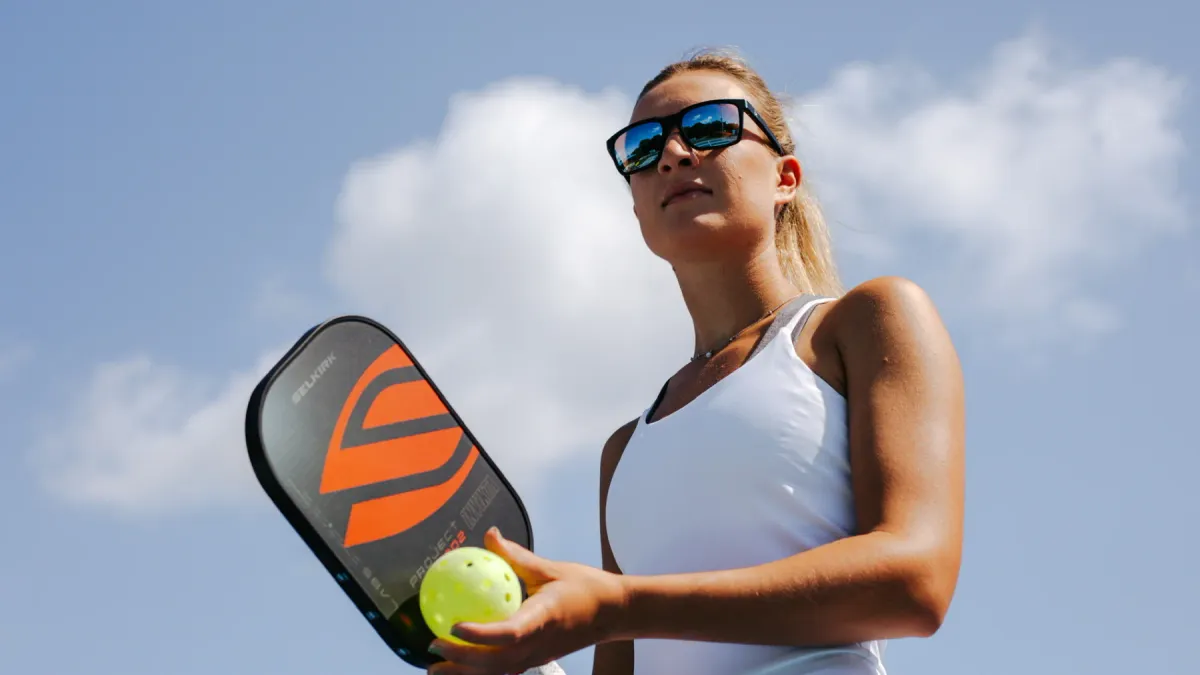
I even have friends who have great hands and have never been afraid of getting hit with the ball before who would never wear eyewear. And when these new JOOLAs came out, I was testing them with a couple of friends and they were like, “Yeah, just tell me what eyewear to buy.”
When I started seeing people like that go buy eyewear and I can see in my area that eyewear is on the rise, that has me thinking maybe we’ve gone too far with paddles.
Yes, it is just a whiffle ball, and sometimes I think the safety concerns are mildly overstated online, but I do think the speed we have reached is the most concerning it has ever been.
Particularly amongst lower players who have worse aim and are just trying to hit the ball as hard as they can.
What should players do if they don’t feel comfortable playing against these paddles?
Chris: If you aren’t comfortable, you shouldn’t feel pressured to play with those people.
But, I would say that you should use some context about the player to make that decision. If you know that a player is a banger and has terrible aim or has a lack of concern for other players, then yeah, you might want to avoid them.
Not everyone who has one of these paddles is a banger or has horrible aim. I’ve played plenty of people who have a very control-oriented style with these paddles and aren’t out to hurt you.
So, use context about the player to make that decision.
I will say for myself when testing some of these power paddles, I have felt uncomfortable using them against certain players because I was more concerned that I may hurt them unintentionally with a drive they weren’t ready for, or a speed up at the kitchen.
Note: if you think this is overblown, check out this segment from a John Kew video where he discusses how JOOLA's new paddles have exceeded the human reaction time:
There’s been talk about capping the power on pickleball paddles at a certain point. Have we reached that point?
Chris: Yeah, I think one that resonated with me was an interview that John Kew (another paddle reviewer) did with Ben Johns (the number one pickleball player in the world), who asked him a similar question.
He was kind of like, 'I don’t think you ever want to make a super rash decision and make the wrong decision. Instead, you kind of have to go past the point of what you feel is good so that we know how far you need to reel it in.'
If you ask me, we’ve probably reached that point, but you could ask others, and they’d probably disagree with me.
However, what I will say is, I have never in my two years of reviewing paddles seen more discussion about the speed of the game than I am now. That’s probably a good sign that we’ve reached that boiling point.
See the John Kew interview with Ben here:
Is this irresponsible of paddle industries?
Chris: What’s really tricky about all of this is that you don’t actually know who to blame. If you look at several of the new power paddles being introduced, the companies have engineered objectively very good performing paddles.
It hits harder than anything, but they did it within the guidelines. They got it approved. Good on them.
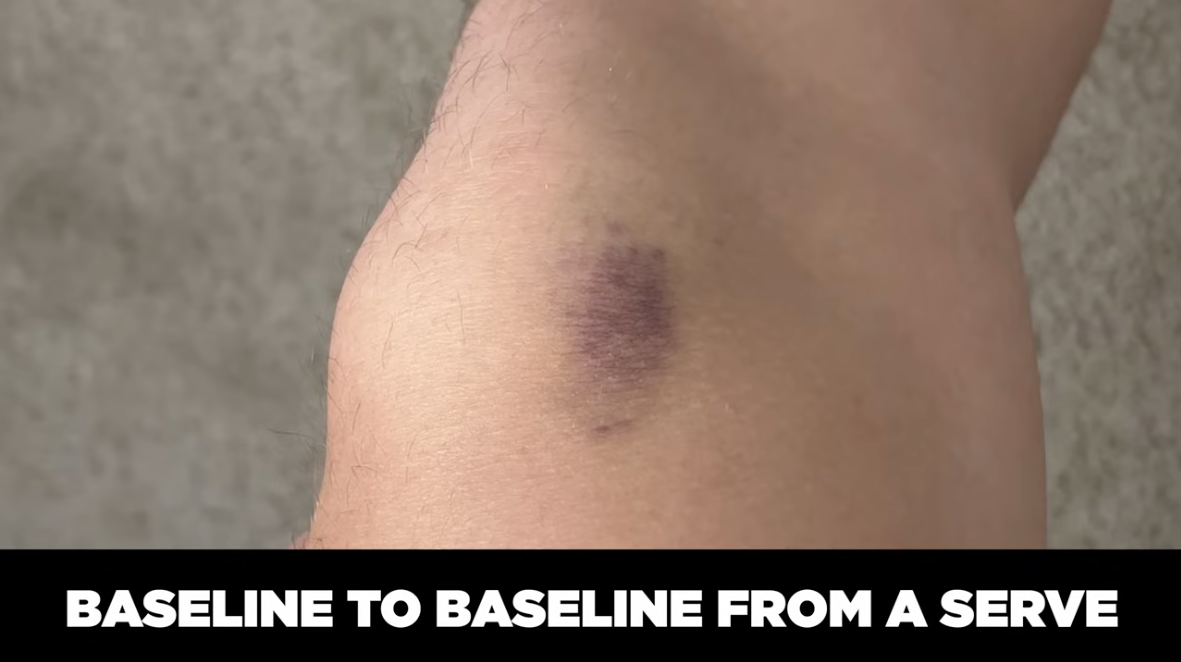
Instead, it seems that regulatory bodies like USA Pickleball should do better policing. For the last year and a half, it’s been like, "Hey, USAP, are you guys home?"
We’ve seen numerous issues with paddles in the last year and a half that impact the state of the game for amateurs and pros.
I think everyone is wondering what USAP is doing and what will have to happen for them to wake up and make a statement or adjust the rules.
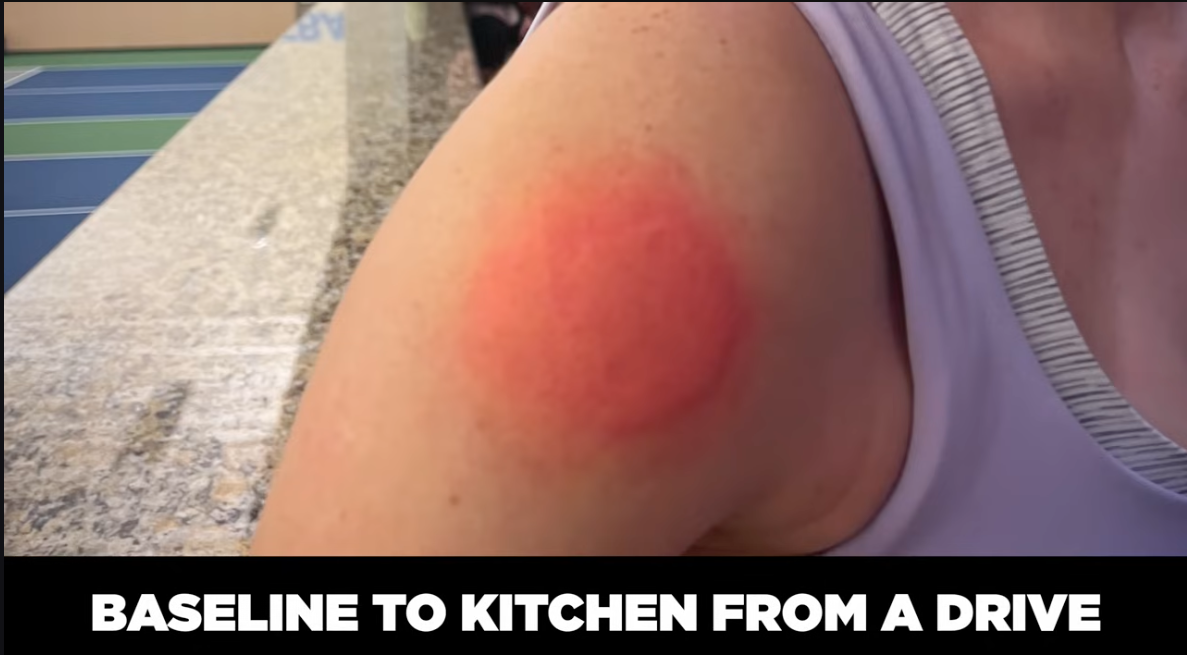
Is there a way to fix this issue?
Chris: I don’t know if there’s a simple fix. When you get into the nitty-gritty of those things, it definitely goes above my head. In the first half of 2023, paddles were crushing (breaking) left and right. Then, toward the end of the year, many brands found ways to mitigate core crushing.
The best fix is for USAP to implement better testing that catches these things before they become issues.
A sentiment several pickleball pros have echoed recently on the PicklePod here with Travis Rettenmaier:
And here with Lea Jansen:
How can pickleball players stay informed of these and other issues?
Chris: Players need a central place to go and get this information. Ultimately, though, it would be nice if these issues were largely eliminated from the industry, so people wouldn’t have to. If you go back, even two, two and a half years ago, no one was talking about grit and deflection.
It was just buy your paddle and go play pickleball.
So, I think paddle manufacturing with some of the newer technologies needs to become more consistent.
It’s an extremely odd time in our sport when you have to question whether someones paddle is legal or not. It shouldn’t be on your average player to know what core crushing is and have to call out someone in rec or a tournament.
I can’t think of any other sport where the equipment breaks and becomes "better" in a way that gives someone a potential advantage.
Where does this end?
Chris: I think we are probably at the boiling point now where USAP has to deal with this. I keep hearing rumors that they are holding a meeting on May 20th to discuss new testing related to power paddles.
It will be extremely sad if it takes someone high profile taking a severe injury to the eye to make the industry wake up and make proper adjustments.
Right now it is an arms race to produce the most powerful paddle and I don’t think we can keep letting it increase.
Is there anything else you want to add?
Chris: I think a lot of people right now are claiming that these companies are cheating. I don’t think that’s fair. Because, from their perspective, if it passes the test they’re given, how is it cheating?
Of course, they’re going to push the envelope and try to get a competitive advantage with their products.
At the end of the day, everything comes back to USAP enforcing the guidelines that they have provided and needing to keep up with the current times and implement new rules that help prevent the industry from getting out of hand.
Thank you so much to Chris for speaking with us. If you want to support Chris and stay informed on all things pickleball paddles, be sure to subscribe to his YouTube Channel and follow him on Instagram.
|

Love Pickleball? Join 100k+ readers for free weekly tips, news & gear deals.
Subscribe to The DinkGet 15% off pickleball gear at Midwest Raquet Sports










